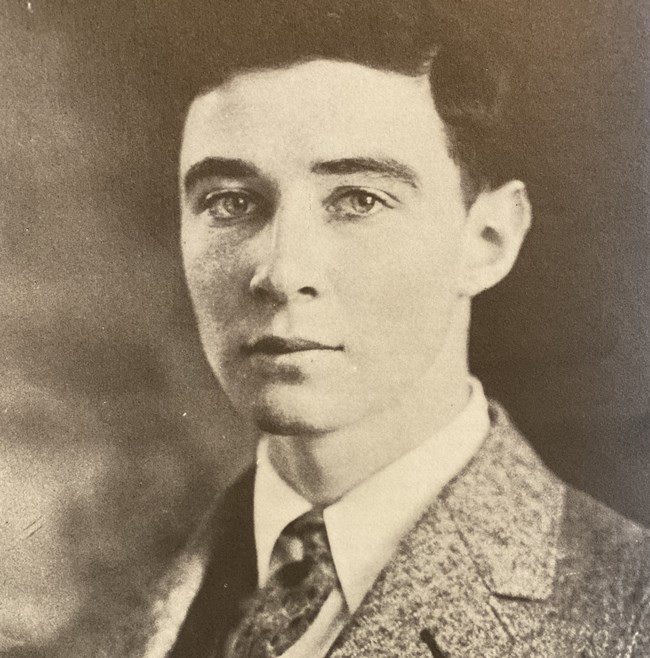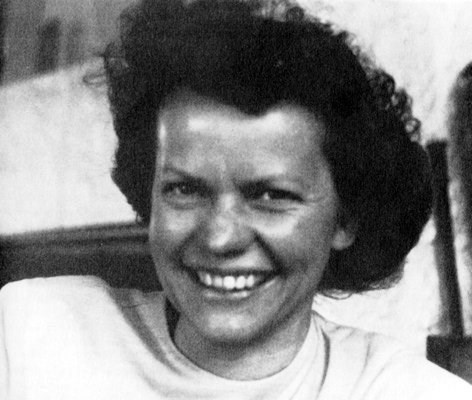Part of a series of articles titled The Life of J. Robert Oppenheimer.
Article
The Life of J. Robert Oppenheimer: Life Before the Manhattan Project

KITTY OPPENHEIMER AND THE J. ROBERT OPPENHEIMER MEMORIAL COMMITTEE
New York to New Mexico
Julius Robert Oppenheimer (Robert Oppenheimer) was born in New York City on April 22, 1904, to wealthy textile importer Julius Oppenheimer and his wife painter Ella Friedman Oppenheimer. The Oppenheimer family lived at 155 Riverside Dr., Manhattan, in an apartment with fine European furniture, servants, and original paintings by Picasso, Rembrandt, and van Gogh. Robert was a solitary and precocious child who enjoyed mineralogy and writing poetry. The Oppenheimers were a non-observant Jewish family and sent young Oppenheimer to the Ethical Culture School founded on principles of rationalism and progressive secular humanism. As an adult, Oppenheimer said “my life as a child did not prepare me for the fact that the world is full of cruel and bitter things.”
Oppenheimer graduated the Ethical Culture School in 1921 then travelled to Germany where he contracted dysentery and became too ill to enter college. In the Spring of 1922, Oppenheimer went to New Mexico at his father’s urging to gain strength through outdoor experiences. It was during this time that Oppenheimer learned to ride horses and developed a life-long love of New Mexico after horse packing through the Sangre de Christo and Jemez Mountain Ranges. During one of these pack trips, Oppenheimer rode up onto the Pajarito Plateau, across the Valle Grande of the Valles Caldera, then on to the isolated Los Alamos Ranch School. Twenty years later, Oppenheimer would suggest the school be used as a secret laboratory during the Manhattan Project.

J. ROBERT OPPENHEIMER, 1936. HUD 326.870 FOLDER 4 HARVARD UNIVERSITY ARCHIVES
Educating Robert Oppenheimer
In the fall of 1922, Oppenheimer entered Harvard University and after briefly studying chemistry, switched to physics. Introverted and at times socially awkward, Oppenheimer continued to write poetry while taking a heavy courseload. Recalling this time Oppenheimer later said, “My feeling about myself was always one of extreme discontent.” Oppenheimer finished his degree in just three years.
Oppenheimer was accepted to study at the Cavendish Laboratory in Cambridge, England in 1925. While he proved poor at conducting experiments in the laboratory and came close to being expelled for misbehavior, he learned of the rising field of quantum mechanics and later transferred to the University of Gottingen, Germany in 1926. Both physics, and Oppenheimer’s personality, were in a state of transition. Oppenheimer saw three psychoanalysts in four months but ultimately credited reading Marcel Proust’s novel In Search of Lost Time and a bicycle tour of Corsica with lifting his depression. Thriving at Gottingen, Oppenheimer collaborated with physicist Max Born and worked toward mastery of the new quantum mechanics. In 1927, Born and Oppenheimer published On the Quantum Theory of Molecules that was a breakthrough in using quantum mechanics to understand the behavior of molecules. Oppenheimer was awarded a doctorate in physics in May of 1927.

KITTY OPPENHEIMER AND THE J. ROBERT OPPENHEIMER MEMORIAL COMMITTEE
The Student Becomes the Teacher
Following graduation, Oppenheimer accepted a job teaching physics at Caltech in Pasadena, California. In the summer of 1928, Oppenheimer returned to New Mexico to go on horse-packing trips with his younger brother Frank. They were shown a rustic cabin for rent on 154 acres in the Sangre de Cristo Mountains that Oppenheimer leased and eventually purchased in 1947 for $10,000. Jokingly named Perro Caliente, Spanish for “Hot Dog,” Oppenheimer now had a permanent piece of his favorite state.
In 1929, Oppenheimer started teaching at the University of California - Berkeley where he began to gather a dedicated following of student admirers that coalesced around his genius. Berkeley gained a reputation as the premier place to study physics in the United States because of Oppenheimer’s work and the work of experimental physicist Ernest Orlando Lawrence. In 1931, Lawrence created his first particle accelerator, a groundbreaking device he called a “cyclotron” and was awarded a Nobel Prize in physics in 1939. During the same decade, Oppenheimer did important original work on black holes and neutron stars.

KITTY OPPENHEIMER AND THE J. ROBERT OPPENHEIMER MEMORIAL COMMITTEE
Dabbling with Communism
In 1936, Oppenheimer entered a turbulent relationship with Jean Tatlock, a medical school student and Communist Party member who introduced Oppenheimer to left-wing politics. Before meeting Jean, Oppenheimer was disinterested in politics and lived without a radio or printed newspapers and magazines. As Oppenheimer engaged with politics further, he developed a “smoldering fury” for the oppression his Jewish relatives were suffering in Nazi Germany. Despite Stalinist purges in Russia, many people in the 1930s thought Communism was the only viable alternative to the rise of Fascism in Europe. Tatlock introduced Oppenheimer to West coast Left-wing figures like Thomas Addis, who would be investigated by the House Committee on Un-American Activities. Unlike his brother Frank, Robert never joined the Communist Party.
Tatlock ended her relationship with Oppenheimer in early 1939 and he met his future wife, Katherine “Kitty” Puening, later that same year. On November 1, 1940, Kitty divorced her third husband and married Robert Oppenheimer on the same day. The Oppenheimer’s first child, Peter, was born in May of 1941. Like Tatlock, Kitty was a Communist Party member but Oppenheimer was soon to curtail his Communist connections because of the start of World War II and the new possibility of atomic weapons.
- Bacher, Robert F. Robert Oppenheimer, 1904-1967. 1st ed. The Los Alamos Story, monograph 2. Los Alamos, N.M: Los Alamos Historical Society, 1999.
- Bird, Kai, and Martin J. Sherwin. American Prometheus: The Triumph and Tragedy of J. Robert Oppenheimer. 1st Vintage Books ed. New York: Vintage Books, 2006.
- Goodchild, Peter. J. Robert Oppenheimer: Shatterer of Worlds. 1st American ed. Boston: Houghton Mifflin, 1981.
- Monk, Ray. Robert Oppenheimer: A Life inside the Center. First Anchor books edition. New York: Anchor Books, 2014.
Last updated: July 21, 2023
